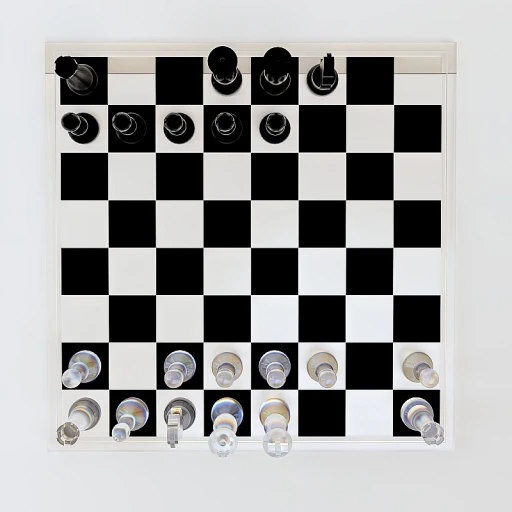The Role of Visual Communication in HR
The Influence of Visuals in Talent Acquisition and HR Operations
In the realm of human resources communication, the role of visual communication is becoming increasingly pivotal. Visual tools can transform the way HR teams interact with potential and current employees, adding layers of clarity and engagement to otherwise traditional processes. Whether you are at an academy or a corporate office, the ability to effectively convey messages visually is crucial for talent acquisition and other HR operations.
Many institutions, such as IMG Academy, known for its diverse sports programs like golf, tennis, and volleyball, have already recognized the power of visuals in their communication strategies. For a boarding school in Bradenton, these tools enhance not only the recruitment process but also the onboarding experience, ensuring that potential students and staff have a clear view of the campus and its facilities.
HR policies, privacy policies, and other critical information can also benefit from visual aids. Instead of dense legal text, a visual representation can break down complex insurance policies or campus safety rules, ensuring that everyone involved understands the policies they have agreed to. This approach helps to reduce misunderstandings and fosters a sense of transparency and trust within the organizational culture.
To learn more about how visual tools are revolutionizing HR communication, you might find it helpful to explore this exploration of HR communication tools. As HR continues to evolve, visual communication stands out as a critical component in creating a dynamic and welcoming environment for all stakeholders.
Benefits of Using Images in HR Practices
Advantages of Integrating Visuals in HR Operations
The incorporation of visual elements into human resources communication offers a plethora of benefits that can enhance the overall effectiveness of HR practices. Leveraging these tools not only serves to communicate information more clearly but also engages employees and stakeholders in a more meaningful way. Here are some of the key advantages:
- Enhanced Engagement: Visual aids, such as images and infographics, capture attention more effectively than text alone. When employees view clear, concise information, they are more likely to understand and retain the message, particularly in environments like an academy campus or a workplace with diverse teams.
- Improved Communication: Images and graphics can transcend language barriers, which is particularly beneficial when dealing with diverse workforces at places like international sports academies. Whether at a boarding school in Bradenton or a company with global reach, visuals break down complex information, making it accessible to everyone.
- Streamlined Processes: Integrating visuals into policy and procedural documents simplifies complex information. Whether it involves explaining a privacy policy, campus safety guidelines, or talent acquisition processes, visual tools can illustrate steps and responsibilities clearly, minimizing confusion and errors.
- Facilitating Training and Development: Visual materials aid in training sessions by providing a clear, engaging delivery of content. From sports camps like those specializing in golf or tennis to larger information seminars on mental performance and insurance options, visuals support memory retention and understanding, maximizing the impact of educational efforts.
- Boosted Creativity and Collaboration: The use of visual tools encourages collaboration and creativity within teams. Visual content shared via email or during meetings often sparks new ideas and perspectives, fostering an innovative culture within HR departments.
The integration of visual communication tools in HR practices stands as an indispensable strategy for modern human resources professionals. As they continue to evolve, HR specialists at organizations ranging from boarding schools to sports academies, like IMG Academy in the United States, will find these tools critical in enhancing HR efficiency and effectiveness.
Challenges in Implementing Visual Tools
Overcoming Barriers to Visual Integration
Implementing visual tools within human resources can seem like a daunting task. While the benefits are apparent, from improving talent acquisition processes to enhancing internal communications across departments like Human Resources, Marketing, and Sports teams, barriers exist that organizations must address. One major challenge is balancing creativity with consistency. HR departments must develop visual content that is engaging and informative, all while adhering to the organization's privacy policy and corporate branding standards. It's crucial to clearly define these guidelines and offer training through platforms such as an academy or internal workshops to help teams at different levels learn the intricacies of creating compliant visual content. Ensuring adequate resources are available to support the visual communication strategy can also pose a challenge. Organizations might need to invest in technology and software tools that aid in creating and managing visual content. Resources like the IMG Academy, which is renowned for its comprehensive sports and academic programs, can be a sourcde of inspiration for organizations looking to enhance their visual communication. Additionally, collaboration between departments is essential to streamline visual communication efforts. Departments, such as the marketing team and the HR specialists at IMG, must work closely to ensure visual tools accurately reflect the company's ethos and values. Effective communication policies can foster collaboration and prevent potential overlaps or inconsistencies. Finally, measuring the impact of these visual tools is crucial. Setting clear objectives and key performance indicators will help human resources teams evaluate the success of visual strategies. By leveraging feedback mechanisms like email surveys and data analytics, HR departments can view trends and identify areas for improvement. HR professionals may reference successful instances of visual communication adaptability at institutions like IMG Bradenton, where integration is not only a trend but a model practice. This reinforces the premise that overcoming these challenges involves ongoing effort and strategic planning. To learn more about optimizing recruitment communication strategies, professionals can explore resources on Enhancing Recruitment Through Text Messaging, further embellishing their HR toolkit with innovative solutions.Effective Strategies for Visual Communication
Strategic Implementation of Visual Tools
Incorporating visual tools into human resources communication can significantly enhance engagement and clarity. However, to ensure these tools are effective, it's crucial to adopt strategic approaches tailored to the unique needs of your organization. Here are some strategies to consider:
- Identify the Right Tools: Begin by assessing the specific needs of your HR department. Whether it’s for talent acquisition, policy communication, or team building, choose tools that align with your goals. For example, platforms like IMG Academy offer visual aids that can be adapted for HR purposes.
- Leverage Visuals for Training: Use images and videos in training sessions to enhance understanding and retention. This is particularly useful in environments such as sports camps or boarding schools where visual learning is prevalent.
- Integrate Visuals in Policy Communication: Simplify complex policies by using infographics. This can be particularly effective for conveying information about insurance, privacy policy, or campus safety, ensuring that all employees have a clear understanding.
- Enhance Employee Engagement: Visual storytelling can be a powerful tool for engaging employees. Consider using videos to showcase team achievements or to introduce new initiatives, such as a college placement program or mental performance workshops.
- Utilize Interactive Platforms: Platforms that allow for interactive engagement, such as those used in sports or travel industries, can be adapted for HR purposes. Interactive visuals can make learning and policy comprehension more engaging.
- Regular Feedback and Adaptation: Continuously gather feedback from employees to understand the effectiveness of the visual tools being used. Be open to adapting strategies based on this feedback to ensure continuous improvement.
By implementing these strategies, HR departments can effectively utilize visual communication to enhance clarity, engagement, and overall efficiency within the organization. As explored in previous sections, while the benefits are clear, understanding the challenges and strategically overcoming them is key to successful implementation.
Case Studies: Successful Visual Communication in HR
Real-life Applications of Visual Tools in Human Resources
Organizations around the world have started embracing the power of visual tools to empower their human resources departments. By implementing visual communication methods, companies aim to enhance understanding, inclusivity, and engagement among employees. Here are some successful applications in HR settings:
- Training and Development: At institutions such as IMG Academy, the use of sports-related imagery in training sessions helps athletes and staff members to grasp complex policies quickly. Training videos and infographics simplify subjects related to mental performance, insurance policy, or campus safety measures.
- Onboarding Processes: Companies with extensive travel and sports programs, like golf or tennis camps, often deploy illustrated onboarding materials to assist new employees. This method, embraced by academies in Bradenton and boarding schools in the United States, helps integrate team members swiftly, ensuring they agree read the policy privacy terms effectively.
- Policy Updates and Announcements: To communicate changes in privacy policies or introduce new campus facilities like the Legacy Hotel, several organizations use email campaigns featuring detailed visuals. This not only makes the content more engaging but also ensures a higher response and retention rate among staff.
- Talent Acquisition: Visual storytelling has revolutionized talent acquisition. HR specialists at coordinator IMG capitalize on powerful visuals to promote job opportunities, showcasing the company culture through images of college placements, track field events, and team sports like volleyball and lacrosse. Potential employees can easily view and understand what the company stands for.
- Internal Communication: Effective visual communication fosters an engaging atmosphere within companies. By employing slide decks and posters, organizations make internal announcements more relatable. This includes views from IMG Academy in Bradenton or notifications about toll-free services provided by partners contact.
These applications highlight the significance of visual tools within human resources, demonstrating the potential for ongoing digital transformation and efficiency in communication strategies.







